
Elevator manufacturer Otis (NYSE: OTIS) met Wall Street’s revenue expectations in Q1 CY2025, but sales fell by 2.5% year on year to $3.35 billion. The company’s full-year revenue guidance of $14.7 billion at the midpoint came in 1.2% above analysts’ estimates. Its non-GAAP profit of $0.92 per share was 1.1% above analysts’ consensus estimates.
Is now the time to buy Otis? Find out by accessing our full research report, it’s free.
Otis (OTIS) Q1 CY2025 Highlights:
- Revenue: $3.35 billion vs analyst estimates of $3.35 billion (2.5% year-on-year decline, in line)
- Adjusted EPS: $0.92 vs analyst estimates of $0.91 (1.1% beat)
- Adjusted EBITDA: $560 million vs analyst estimates of $614 million (16.7% margin, 8.8% miss)
- The company lifted its revenue guidance for the full year to $14.7 billion at the midpoint from $14.25 billion, a 3.2% increase
- Management reiterated its full-year Adjusted EPS guidance of $4.05 at the midpoint
- Free Cash Flow Margin: 4.7%, similar to the same quarter last year
- Organic Revenue was flat year on year (3.8% in the same quarter last year)
- Market Capitalization: $39.15 billion
Company Overview
Credited with inventing the first hydraulic passenger elevator, Otis Worldwide (NYSE: OTIS) is an elevator and escalator manufacturing, installation and service company.
General Industrial Machinery
Automation that increases efficiency and connected equipment that collects analyzable data have been trending, creating new demand for general industrial machinery companies. Those who innovate and create digitized solutions can spur sales and speed up replacement cycles, but all general industrial machinery companies are still at the whim of economic cycles. Consumer spending and interest rates, for example, can greatly impact the industrial production that drives demand for these companies’ offerings.
Sales Growth
A company’s long-term sales performance can indicate its overall quality. Any business can experience short-term success, but top-performing ones enjoy sustained growth for years. Unfortunately, Otis’s 1.8% annualized revenue growth over the last five years was sluggish. This was below our standards and is a tough starting point for our analysis.

We at StockStory place the most emphasis on long-term growth, but within industrials, a half-decade historical view may miss cycles, industry trends, or a company capitalizing on catalysts such as a new contract win or a successful product line. Otis’s annualized revenue growth of 2.2% over the last two years aligns with its five-year trend, suggesting its demand was consistently weak. 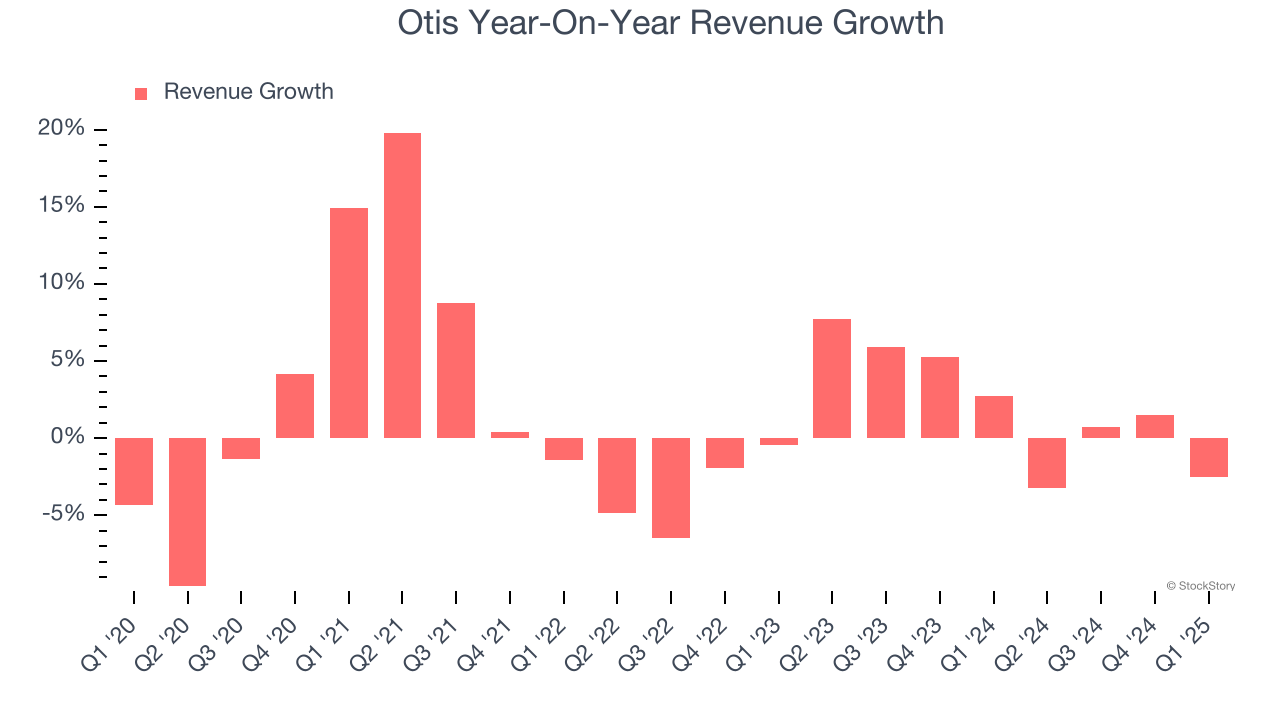
Otis also reports organic revenue, which strips out one-time events like acquisitions and currency fluctuations that don’t accurately reflect its fundamentals. Over the last two years, Otis’s organic revenue averaged 3% year-on-year growth. Because this number aligns with its normal revenue growth, we can see the company’s core operations (not acquisitions and divestitures) drove most of its results. 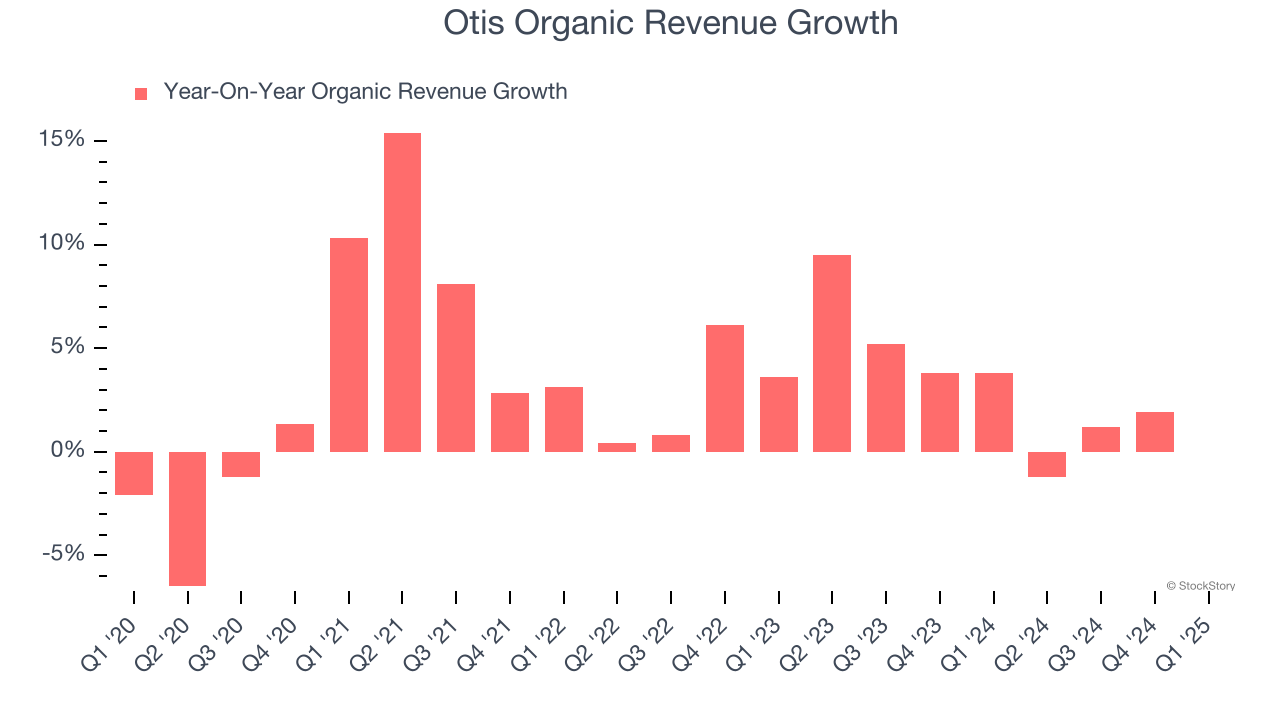
This quarter, Otis reported a rather uninspiring 2.5% year-on-year revenue decline to $3.35 billion of revenue, in line with Wall Street’s estimates.
Looking ahead, sell-side analysts expect revenue to grow 2.4% over the next 12 months, similar to its two-year rate. This projection is underwhelming and indicates its newer products and services will not lead to better top-line performance yet.
Software is eating the world and there is virtually no industry left that has been untouched by it. That drives increasing demand for tools helping software developers do their jobs, whether it be monitoring critical cloud infrastructure, integrating audio and video functionality, or ensuring smooth content streaming. Click here to access a free report on our 3 favorite stocks to play this generational megatrend.
Operating Margin
Operating margin is a key measure of profitability. Think of it as net income - the bottom line - excluding the impact of taxes and interest on debt, which are less connected to business fundamentals.
Otis has been an efficient company over the last five years. It was one of the more profitable businesses in the industrials sector, boasting an average operating margin of 14.6%. This result was particularly impressive because of its low gross margin, which is mostly a factor of what it sells and takes huge shifts to move meaningfully. Companies have more control over their operating margins, and it’s a show of well-managed operations if they’re high when gross margins are low.
Looking at the trend in its profitability, Otis’s operating margin might fluctuated slightly but has generally stayed the same over the last five years. This raises questions about the company’s expense base because its revenue growth should have given it leverage on its fixed costs, resulting in better economies of scale and profitability.
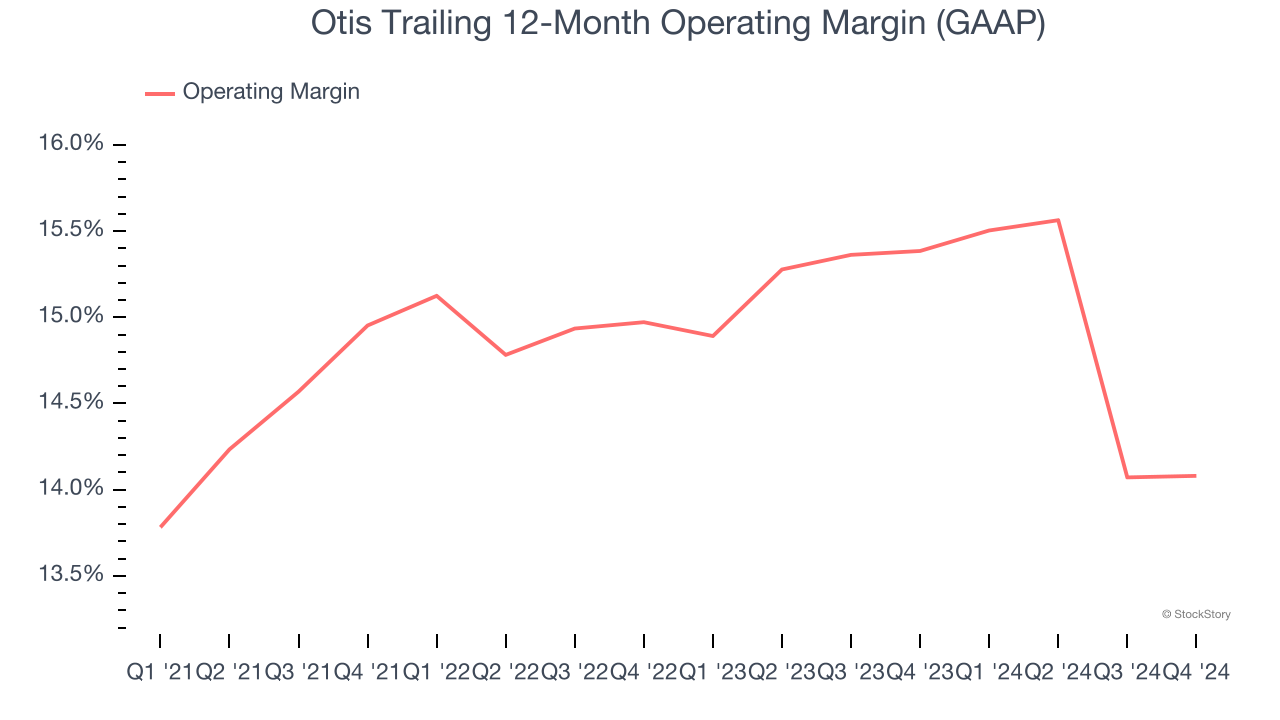
Earnings Per Share
We track the long-term change in earnings per share (EPS) for the same reason as long-term revenue growth. Compared to revenue, however, EPS highlights whether a company’s growth is profitable.
Otis’s EPS grew at a solid 11.6% compounded annual growth rate over the last five years, higher than its 1.8% annualized revenue growth. However, this alone doesn’t tell us much about its business quality because its operating margin didn’t expand.
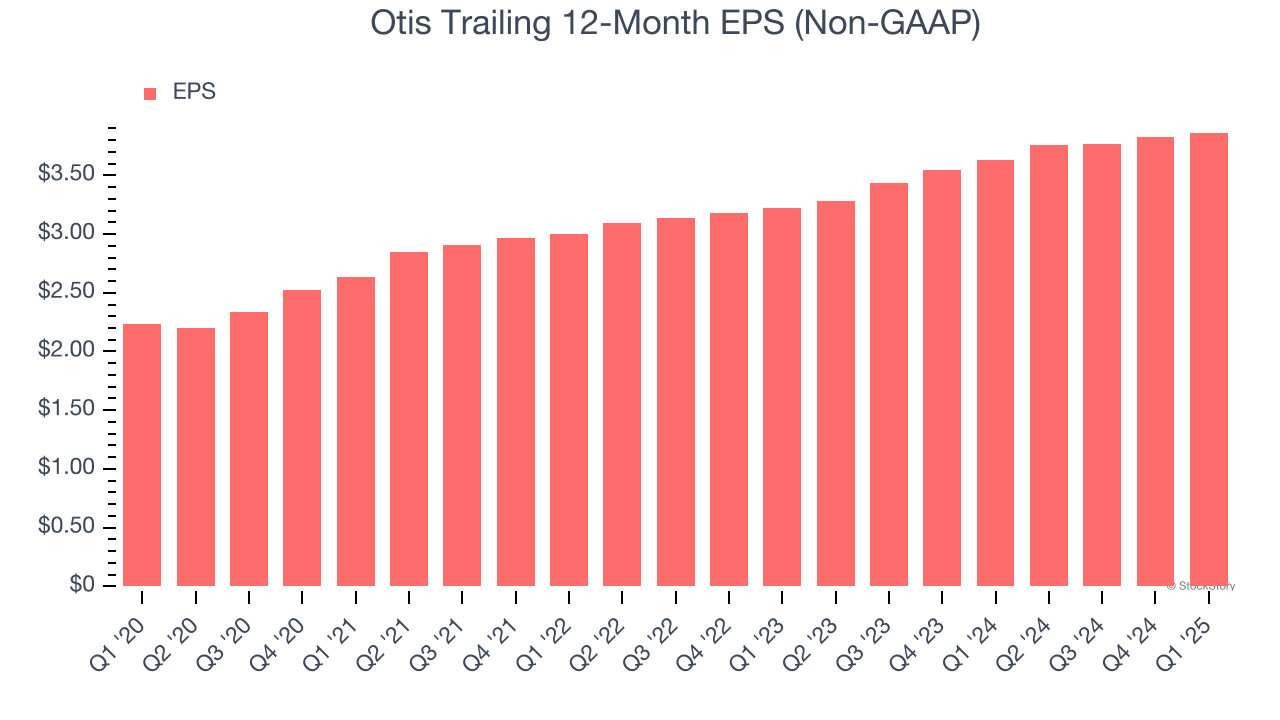
We can take a deeper look into Otis’s earnings to better understand the drivers of its performance. A five-year view shows that Otis has repurchased its stock, shrinking its share count by 7.9%. This tells us its EPS outperformed its revenue not because of increased operational efficiency but financial engineering, as buybacks boost per share earnings. 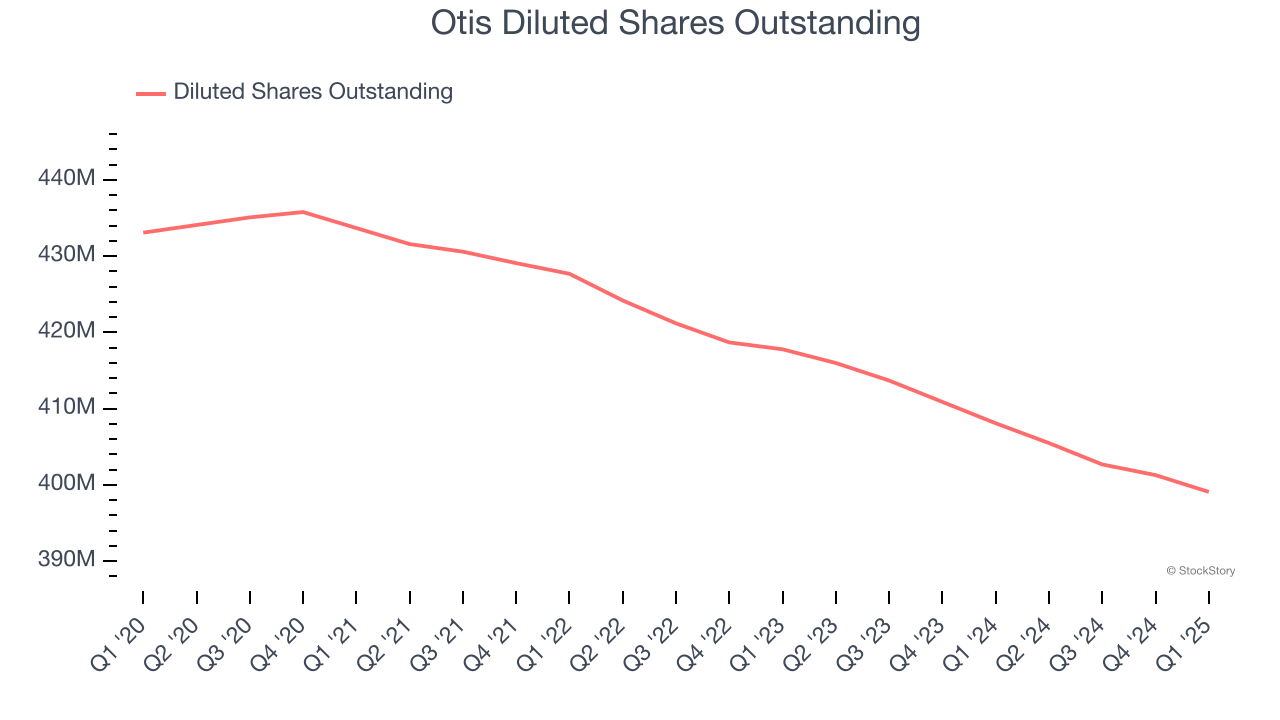
Like with revenue, we analyze EPS over a shorter period to see if we are missing a change in the business.
For Otis, its two-year annual EPS growth of 9.5% was lower than its five-year trend. We hope its growth can accelerate in the future.
In Q1, Otis reported EPS at $0.92, up from $0.88 in the same quarter last year. This print beat analysts’ estimates by 1.1%. Over the next 12 months, Wall Street expects Otis’s full-year EPS of $3.86 to grow 8.3%.
Key Takeaways from Otis’s Q1 Results
Revenue was just in line but EPS beat. Looking ahead, Otis lifted full-year revenue guidance, and the updated figure slightly beat analysts’ expectations. On the other hand, its organic revenue in the quarter fell short of Wall Street’s estimates. Overall, this wasn't a perfect quarter, but it was still a decent one. The stock traded up 1.2% to $99.99 immediately after reporting.
Is Otis an attractive investment opportunity right now? We think that the latest quarter is only one piece of the longer-term business quality puzzle. Quality, when combined with valuation, can help determine if the stock is a buy. We cover that in our actionable full research report which you can read here, it’s free.





